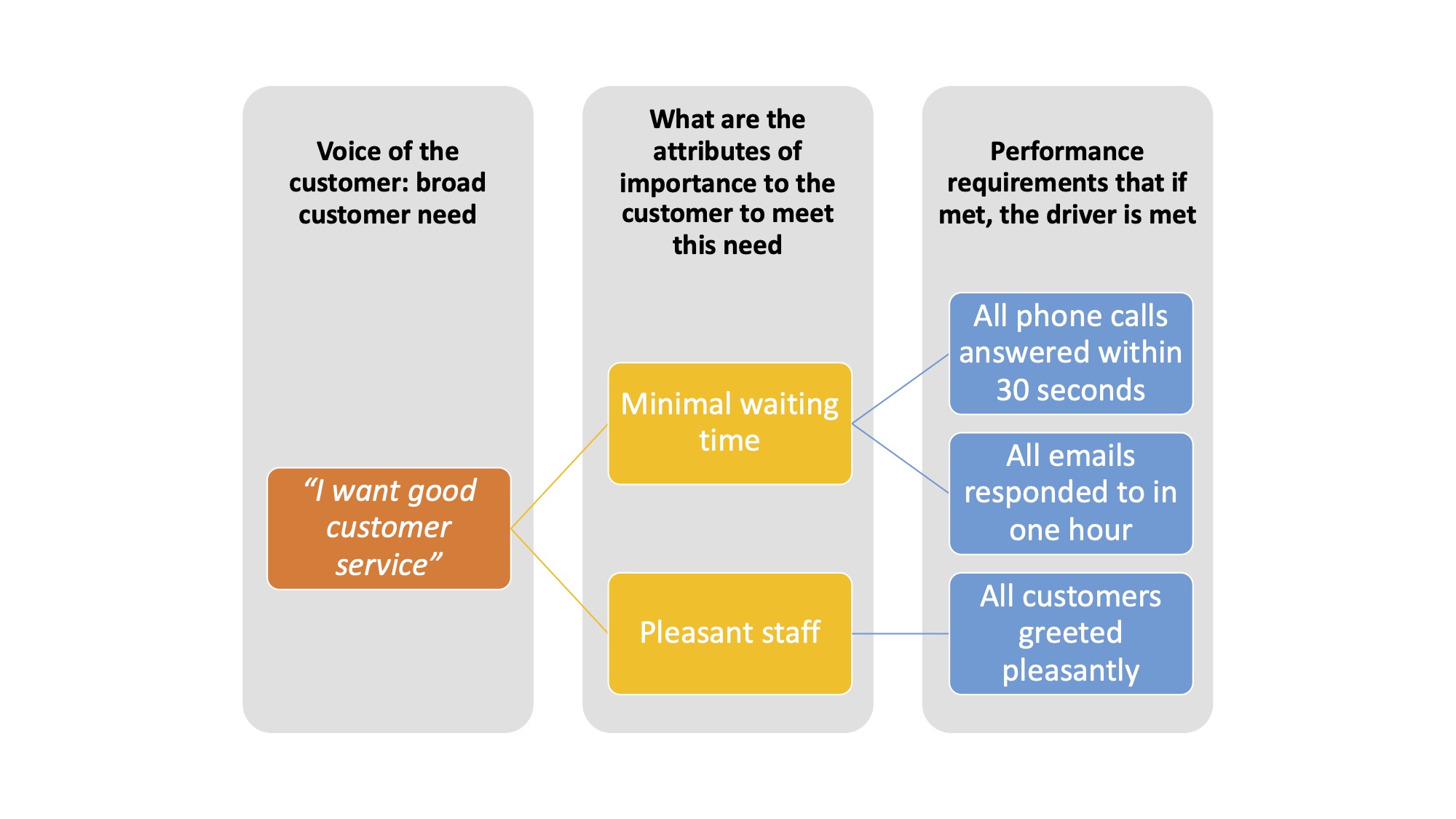Using a CTQ-Tree to understand ‘customer’ requirements
By Olga Murdoch, UCD Agile
What is a CTQ Tree used for?
CTQ stands for Critical to Quality. CTQs then, are the critical requirements your customers have of you, your business, your process. CTQs are an important input when designing new or improving existing processes, services, products, etc. A CTQ-Tree is a tool for translating the needs customers express into meaningful, measurable and actionable requirements. That is, the CTQ-Tree helps you translate what your customer says, into something you can do and measure.
Who is my ‘customer’?
As described in a previous post, a customer is someone whose needs you understand, and in relation to which you understand what you have to offer, and it is in the dialogue between what they need and what you have to offer that you shape the future together. Or, according to Oxford, a customer is a person of a specified kind with whom someone has to deal. The key point here is that there are people who rely on what each of us do, and identifying their needs from us is a crucial part of improving how things work.
Directions on how to use it
Step 1: Voice of the customer: ask your customer(s) what they want
The voice of the customer is the customer requirements expressed in their own words, for example “I want good customer service”. It is important to identify who your customers are and reach out to them and ask them about what they want, rather than working from assumptions.
Ask your customers about their current experience, what works well for them and what a better future looks like. You might like to do this this through focus groups, one-to-one interviews, or as a survey
Step 2: Identify your customers quality drivers
If you are working with your customers in person, for example in a focus group, you can work with them to figure out what the most important attributes of their needs are. For example, “I want good customer service” is very vague, but the attributes of good customer service “minimal waiting time” and “pleasant staff” are much more specific and a clear indication of what the customer places importance on.
If you are working with survey data, this information can be gleaned from your analysis. You might also like to use KANO Analysis to help you identify the requirements of most importance to your customers.
Step 3: Identify your customers performance requirements
Now that we know what your customers drivers are, we know that if we meet those drivers we will meet their needs. How, specifically, can we meet those drivers? For each driver, we need to identify the specific requirements or specifications that combine to result in satisfaction for the customer. In the “minimal waiting time” example, this might be “all phone calls answered within 30 seconds” and “all emails responded to in one hour”.
What now?
Now you have identified what exactly it is that will satisfy your customers, you can use this to set goals and measure the impact of your improvement effort. Make sure to keep these measurements alive on an ongoing basis so you have a way to identify continuous improvement opportunities.
Why not try out this tool yourself, and let me (olga.murdoch@ucd.ie) know how you get on.
Contact agile@ucd.ie for support on using tools such as this and others.

